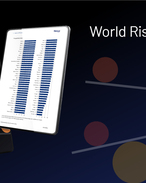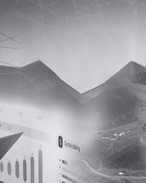RAG Coal International has its sights firmly set on a major underground development at the Burton coal mine in Queensland, underlining the project’s strategic importance to the acquisitive German coal giant.
According to an exclusive interview with RAG’s senior technical man in Australia, a feasibility study into the planned exploitation of the Kerlong underground resource will be completed by the end of the first quarter of calendar 2000.
| |
Dr Frank Leschhorn, general manager, mining, for RAG Australia Coal ... Burton's Kerlong underground could be in operation by 2004-05.
|
And a development go-ahead could follow without too much delay, according to Dr Frank Leschhorn, general manager, mining, for RAG Australia Coal. “We have to decide, because Burton has to go on and we need a decision soon on how to develop Kerlong,” he said. “The timing depends on the type of development, but we should have the underground mine in operation by 2004-05.”
RAG is still easing itself into the driver’s seat at Burton, 150km south-west of Mackay. Portman Mining announced the sale of its 95% stake in the mine to RAG in September, and the $200 million deal was due to be settled in December.
A key issue of the purchase was the European Union Commission’s approval, which was granted in November. The commission said Burton would have a “significant effect on the German market for coking coal, but would not have an adverse effect on the competition in this market”
RAG is a privately-owned conglomerate with close links to the European steel sector. Some analysts believe the company might attempt to sell more of Burton’s coal into Europe than was the case under Portman.
“Burton coking coal is a unique product in the coking coal market, and it suits our marketing strategy very well,” Leschhorn said. “We invested now because if you wait for high coal prices, investments are more expensive. We are anti-cyclical.”
Already the new owner is investigating ways of cutting costs and improving efficiencies at the mine, which currently produces around 4 million tonnes per annum of export coal from a truck and shovel operation.
Leschhorn said RAG would aim to squeeze more profit out of Burton, in order to offset weak coal prices. “We all have to gain productivity, as next year the coal prices may stay weak.”
Burton has already gained a reputation as an efficiently-run open cut, operated by 5% owner Thiess Contractors. Nevertheless, RAG sees some fat that can be trimmed, particularly in the treatment plant. “We will talk about that with our operator. We are looking to get better results, and to get a better yield,” Leschhorn said.
Burton’s product is roughly 80% coking coal and 20% thermal. “We are trying to increase the ratio of coking coal, because you get a better price,” Leschhorn said.
RAG appears comfortable with the contractor arrangement at Burton, which has allowed the mine to achieve high productivity through flexible work practices. “Thiess are doing a good job and we are happy to work with such an experienced company,” Leschhorn said. “They are also a 5% shareholder, so we will continue to have good relations with Thiess.”
Contractors are used in the German coal sector, although apparently not to the same extent as in Australia. “I was general manager of a German coal mine for six years, and had some experience with contractors,” Leschhorn said. “There are three main underground contractor companies. But they are not in longwalls. Contractors are mostly used for development and speciality construction work.”
Thiess is of course odds-on to be one of the frontrunners for the Kerlong underground job, however, Leschhorn stressed that bidding for the work would be a competitive process. “Being a shareholder in Burton doesn’t mean Thiess gets the contract for every kind of work. We have a competitive market. And when it comes to the (underground contract) offer we will of course look at who will do the job best and for the lowest cost.”
Leschhorn is well qualified to oversee the eventual transition into underground operations. He is a trained mining engineer, working with RAG Australia’s two other accounting/commercial executives.
Kerlong is technically demanding, due to the orientation of the coal seam. “The steep dip of 25 degrees is a challenge for any mining engineer, but it is a big seam and contains high quality coking coal. And we are now at the stage of comparing some mining methods for Kerlong.”
Portman closely assessed the possibility of hydraulic mining, which uses high-pressure water to wash the coal out of the seam. RAG, too, is examining the viability of the method, which appears well suited to Burton. “That is one of the possible mining methods,” Leschhorn said. “It is technically feasible. We now have to look at the economics.”
Leschhorn said there was a hydraulic mine operating profitably in New Zealand, while the method had also been implemented on RAG’s home turf. “We have experience in Germany with hydraulic mining,” he said. “There are none operating now, but there have been two mines. And of course in Russia there are hydraulic mines operating in very difficult conditions.”
He added RAG would also evaluate the economic and technical merits of conventional continuous miner mining, which would probably be an “adopted kind of room and pillar”
According to overseas press reports, RAG is confident the proposed underground development will more than double Burton’s mine life, currently projected at about 10-12 years based on an open cut down to 105m depth.
The underground resources extend to 250m vertical depth and were estimated by the previous operator at around 140 million tonnes.
RAG’s acquisition of Burton is the latest step in the German company’s global expansion. It is now regarded as one of the biggest coal miners in the world, alongside groups such as Peabody Resources and Rio Tinto.
Earlier this year RAG bought the US coal assets of Cyprus Amax Minerals Company for $US1.1 billion. Cyprus’ direct stake in the Springvale mine in New South Wales and a controlling interest in Australian coal miner Oakbridge were excluded from the sale.
RAG also owns 27% of the German Creek operation in Queensland, which is operated by Shell. RAG is tipped as a possible buyer of Shell’s controlling stake when the oil major completes its planned coal sell-off in the first half of 2000. At the same time, mineral sands group Ticor is intending to quit its 26% interest in German Creek, which might also be of interest to RAG.
Leschhorn declined to comment on speculation surrounding the Shell sale. However, a source close to RAG said the company was likely to be one of the short list of companies selected to consider the Shell assets.
“A lot of things are for sale and RAG gets linked to everything because they have been acquisitive in recent times,” the source said. “They are always willing to look.”























